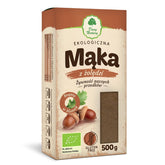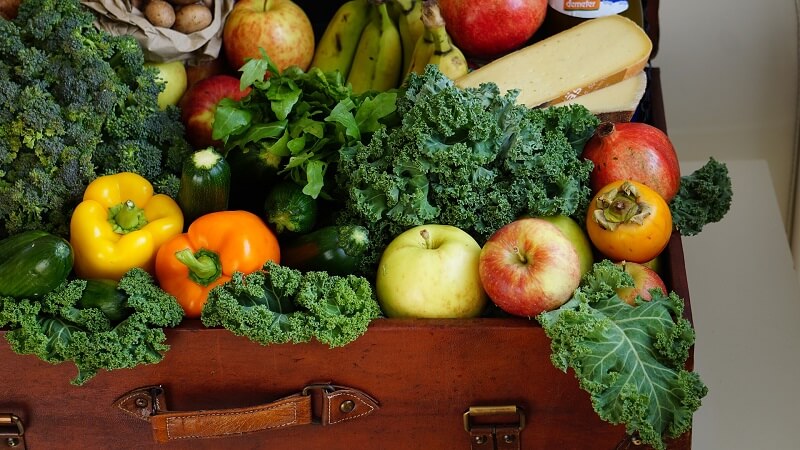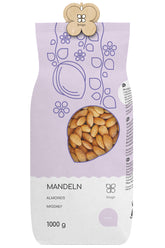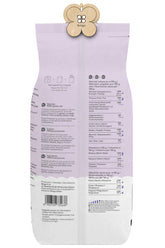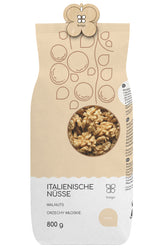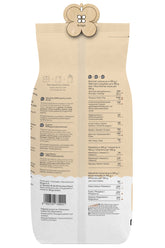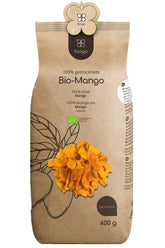Zero Waste in the Kitchen – How to Avoid Wasting Food Vol. I
- Prepare a grocery shopping list
- Use leftovers
- Freezing food
- Proper storage of food
- As easy as Zero Waste
Zero waste covers many topics, but in practice, it boils down to one thing: reducing waste production. This concept can mean both trying to eliminate the habit of buying products in unnecessary plastic packaging, repairing and reusing broken items, and something as noble as not wasting your life energy. How do you implement the zero waste idea in the kitchen and avoid wasting food? Here are some simple solutions.
Prepare a grocery shopping list
The easiest and most effective way to avoid food waste is to plan your shopping carefully and pick only what's on your list during a trip to the market or supermarket. Before making a shopping list, you need to check your cupboards and refrigerator. Check the expiration dates of the products you already have, and remember that there are two labels: "best before" and "use by." Products from the first group are not harmful to your health, even if you eat them a few days after the expiration date. They may seem a little less appealing, but if you don't notice any mold or other disturbing signs of spoilage, you can easily do something with them. The date preceded by the "use by" entry should be taken into account, so when checking, put the items whose best-before date is closest at the top and consider them when planning your meals for the next few days. Think about how they can be used up and add to the list what you need to cook something from products with a short shelf life.
Use leftovers
Leftover food can also look (somehow) luxurious and taste great. Remember, almost anything can be refreshed and presented in a new form. Leftovers, vegetables, and sauces come together in a salad with the clever name Buddha Bowl. Sauté leftover cooked vegetables in olive oil and garlic or make a creamy soup from them; transform stale bread into French toast (soaked in plant-based milk for the vegan version; egg for the "childhood memory" version). Try firming fresh but slightly wilted vegetables in a double boiler. Wrap leftovers in a tortilla or pancake, add them to pasta, or make a pie and fruit compote.
Freezing food
Freezing is a method that allows you to preserve the freshness, flavor, and nutritional value of food for up to several months, but remember not to freeze stale products. You can freeze bread , fruit, vegetables and parsley, dumplings, but also soups and other dishes, preferably divided into smaller portions. A prime example of zero-waste in the kitchen is freezing vegetable peels, cuttings, and ends. This way, you'll always have the ingredients for vegetable broth in the fridge, which you can use to make soups, sauces, risottos, or anything that can be topped with a light broth.
Proper storage of food
Store products with a short shelf life on top.
To protect your eggs from premature spoilage, don't wash them before refrigerating them, as this will remove their natural protective coating. Interestingly, eggs don't need refrigeration at all. If you prefer to keep them out of the refrigerator, preserve them in salt, like our grandmothers did.
Full use of vegetables and fruit
Zero waste isn't exclusive. Following the idea of not wasting food means using all parts of the vegetable, even the least popular ones, and we're talking stems, leaves, and tips. For example, a broccoli stalk, peeled of its woody outer layer, is crisp, juicy, and nutritious, perfect for dipping in hummus or as an ingredient in salads. Carrot and radish leaves can always be mixed with olive oil, garlic, and sunflower seeds to make pesto. Kohlrabi or celery leaves, sautéed in butter like spinach, serve as a side dish for dinner. It's also worth experimenting with pickling and marinating, adding what we don't eat to cocktails or soups, or roasting it with garlic. Why throw it away when it's packed with so many vitamins and fiber?
As easy as Zero Waste
As you can see, not wasting food can be easy and fun, and even a little exciting! Open yourself up to new flavors and possibilities, prepare pasta with carrot and parsley pesto, pickle radish leaves, and baste risotto with your first leftover broth. Have fun in the kitchen and enjoy knowing that more and more conscious people are joining you, and nature's harvest isn't ending up in the trash. Win!
THE PUBLISHER'S CHOICE
Almonds 1 kg BIOGO
- £11.00
£13.00- £11.00
- Unit price
- / per
Walnuts 800 g BIOGO
- £8.00
£10.00- £8.00
- Unit price
- / per
Dried organic mango 400 g BIOGO
- £10.00
- £10.00
- Unit price
- / per
Dried White Mulberries 500 g ORGANIC
- £6.00
£7.00- £6.00
- Unit price
- / per
Dried organic figs 800 g BIOGO
- £28.00
- £28.00
- Unit price
- / per
Unpeeled buckwheat groats 1 kg BIOGO
- £3.00
£3.00- £3.00
- Unit price
- / per
Organic coconut flakes 500 g BIOGO
- £10.00
- £10.00
- Unit price
- / per
Organic oat flakes 600 g BIOGO
- £4.00
- £4.00
- Unit price
- / per


